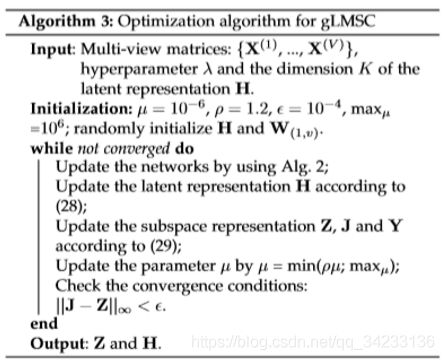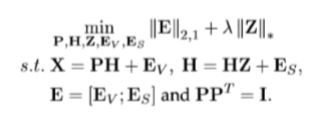- 机器学习:利用sklearn实现心脏病预测
薄化克Oswald
机器学习:利用sklearn实现心脏病预测机器学习sklearn实现心脏病预测项目地址:https://gitcode.com/Resource-Bundle-Collection/171ff欢迎使用本资源仓库,本项目专注于利用Python的sklearn库进行心脏病预测的机器学习实践。通过详尽的步骤和示例代码,本项目为你展示了如何应用不同的机器学习算法来分析心脏病数据集,并预测患者是否有可能患有
- 利用 PyTorch 动态计算图和自动求导机制实现自适应神经网络
drebander
AI编程pytorch神经网络人工智能
在深度学习任务中,不同任务的复杂度千差万别。为了解决复杂任务对模型容量的需求,同时避免简单任务因过度拟合导致的性能下降,我们可以构建一个能够根据任务自动调整网络结构的神经网络。在PyTorch中,动态计算图和自动求导机制为实现这一目标提供了强大的工具。动态网络结构设计PyTorch的动态计算图允许我们根据运行时的输入数据或任务复杂度,动态创建和修改网络结构。动态添加/移除层:可以在训练过程中根据需
- 可解释性:走向透明与可信的人工智能
一位小说男主
人工智能入门深度学习机器学习人工智能神经网络
随着深度学习和机器学习技术的迅速发展,越来越多的行业和领域开始应用这些技术。然而,这些技术的“黑盒”特性也带来了不容忽视的挑战。在许多任务中,尽管这些模型表现出色,取得了相当高的精度,但其决策过程不透明,这对于依赖于机器决策的应用(如金融、医疗、法律等)来说,可能是无法接受的。因此,如何提高模型的可解释性、实现透明和可信的人工智能,成为了当下人工智能领域的重要课题。❤️本文将深入探讨机器学习中的可
- 爬虫实战--- (6)链家房源数据爬取与分析可视化
rain雨雨编程
爬虫实战系列python爬虫数据分析
文章持续跟新,可以微信搜一搜公众号[rain雨雨编程],第一时间阅读,涉及数据分析,机器学习,Java编程,爬虫,实战项目等。目录前言1.爬取目标2.所涉及知识点3.步骤分析(穿插代码讲解)步骤一:发送请求步骤二:获取数据步骤三:解析数据步骤四:保存数据4.爬取结果5.完整代码6数据可视化前言今天我将为大家分享一个非常实用的Python项目——链家房源数据的爬取与分析可视化。在这篇文章中,我们将分
- 深度图转点云——从图像到三维场景
MrybHtml
点云
在计算机视觉领域中,深度图转点云是一项重要的任务,它能够将二维深度图像转换为三维点云表示。点云是一种由点构成的数据结构,可以直观地表示三维场景中的物体形状和空间布局。本文将介绍一种常见的方法,并提供相应的源代码,以实现深度图转点云。深度图是一种灰度图像,其中每个像素值代表了该点距离相机的距离。深度图通常使用激光雷达或者结构光等传感器捕捉得到。而点云则是由一系列的三维点组成,每个点都有其在空间中的坐
- 使用scikit-learn实现线性回归对自定义数据集进行拟合
Luzem0319
scikit-learn线性回归python
1.引入必要的库首先,需要引入必要的库。scikit-learn提供了强大的机器学习工具,pandas和numpy则用于数据处理,matplotlib用于结果的可视化。importpandasaspdimportnumpyasnpfromsklearn.model_selectionimporttrain_test_splitfromsklearn.linear_modelimportLinear
- python3+TensorFlow 2.x(四)反向传播
刀客123
python学习tensorflow人工智能python
目录反向传播算法反向传播算法基本步骤:反向中的参数变化总结反向传播算法反向传播算法(Backpropagation)是训练人工神经网络时使用的一个重要算法,它是通过计算梯度并优化神经网络的权重来最小化误差。反向传播算法的核心是基于链式法则的梯度下降优化方法,通过计算误差对每个权重的偏导数来更新网络中的参数。反向传播算法基本步骤:前向传播:将输入数据传递通过神经网络的各层,计算每一层的输出。计算损失
- 数据挖掘的常用算法
北柠陌寒0207
笔记
在大数据时代,数据挖掘是最关键的工作。大数据的挖掘是从海量、不完全的、有噪声的、模糊的、随机的大型数据库中发现隐含在其中有价值的、潜在有用的信息和知识的过程,也是一种决策支持过程。其主要基于人工智能,机器学习,模式学习,统计学等。通过对大数据高度自动化地分析,做出归纳性的推理,从中挖掘出潜在的模式,可以帮助企业、商家、用户调整市场政策、减少风险、理性面对市场,并做出正确的决策。目前,在很多领域尤其
- 从规则到神经网络:机器翻译技术的演进与未来展望
Echo_Wish
前沿技术人工智能神经网络机器翻译人工智能
从规则到神经网络:机器翻译技术的演进与未来展望引言还记得早些年用翻译软件翻译一句简单的英文句子,却发现翻译结果让人啼笑皆非的日子吗?从“我喜欢吃苹果”被翻译成“我喜欢吃苹果电脑”,到今天的神经网络机器翻译(NeuralMachineTranslation,NMT)能够生成语义流畅、接近人类水平的翻译,我们见证了机器翻译技术的巨大飞跃。但机器翻译技术是如何一步步发展到今天的?未来又将走向何方?本文将
- Upgini: 智能数据搜索与丰富化引擎 - 提升机器学习和人工智能模型准确性的利器
2401_87189860
人工智能机器学习
Upgini:智能数据搜索与丰富化引擎在当今数据驱动的世界中,机器学习和人工智能模型的准确性至关重要。然而,提高模型准确性往往是一项艰巨的任务,需要大量的特征工程和数据处理工作。幸运的是,Upgini这一创新的Python库为数据科学家和机器学习工程师提供了一个强大的解决方案。Upgini的核心功能Upgini是一个智能数据搜索和丰富化引擎,专为机器学习和AI设计。它的主要功能包括:自动特征发现与
- 《机器学习实战》——在python中使用Matplotlib注解绘制树形图
哆啦AA梦
python机器学习python机器学习
#encoding=utf-8#使用文本注解绘制树形图importmatplotlib.pyplotaspltdecisionNode=dict(boxstyle="sawtooth",fc="0.8")leafNode=dict(boxstyle="round4",fc="0.8")arrow_args=dict(arrowstyle="<-")#上面三行代码定义文本框和箭头格式#定义决策树决策
- 【外文原版书阅读】《机器学习前置知识》1.线性代数的重要性,初识向量以及向量加法
Icomi_
807.《机器学习前置知识》机器学习人工智能计算机视觉深度学习神经网络c++c语言
目录编辑编辑1.Chapter2WhyLinearAlgebra?2.Chapter3WhatIsaVector?个人主页:Icomi大家好,我是Icomi,本专栏是我阅读外文原版书《BeforeMachineLearning》对于文章中我认为能够增进线性代数与机器学习之间的理解的内容的一个输出,希望能够帮助到各位更加深刻的理解线性代数与机器学习。若各位对本系列内容感兴趣,可以给我点个关注跟进内容
- Python 实现车牌识别
菜狗小测试
Python技术专栏python计算机视觉opencv
一、车牌识别的基本原理车牌识别主要包括以下几个步骤:图像采集:通过摄像头或其他图像采集设备获取包含车牌的图像。图像预处理:对采集到的图像进行灰度化、滤波、增强等操作,以提高图像的质量和清晰度,便于后续的处理。车牌定位:从预处理后的图像中找出车牌的位置。这可以通过一些特征提取和机器学习算法来实现,例如基于颜色特征、边缘特征等方法来定位车牌区域。字符分割:将定位到的车牌区域中的字符分割开,以便对每个字
- 数学与机器学习:共舞于智能时代的双璧
每天五分钟玩转人工智能
机器学习人工智能
随着人工智能的崛起,机器学习作为其核心技术之一,正引领着新一轮的科技革命。而在这场革命中,数学以其深邃的理论和精妙的工具,为机器学习提供了坚实的支撑。数学与机器学习之间的关系,如同琴瑟和鸣,共同编织出智能时代的华美乐章。数学,作为自然科学的皇后,以其严谨的逻辑和精确的推理,为机器学习提供了坚实的理论基础。机器学习算法的设计、优化和应用,都离不开数学的支持。无论是线性代数、概率统计,还是微积分、最优
- 【车牌识别】卷积神经网络CNN车牌识别【含 GUI Matlab源码 2638期】
Matlab仿真科研站
matlab
欢迎来到Matlab仿真科研站博客之家✅博主简介:热爱科研的Matlab仿真开发者,修心和技术同步精进,Matlab项目合作可私信。个人主页:Matlab仿真科研站博客之家代码获取方式:扫描文章底部QQ二维码⛳️座右铭:行百里者,半于九十;路漫漫其修远兮,吾将上下而求索。⛄更多Matlab图像处理(仿真科研站版)仿真内容点击Matlab图像处理(仿真科研站版)⛄一、CNN车牌识别简介1车牌定位1.
- 深入解析ncnn::Net类——高效部署神经网络的核心组件
又吹风_Bassy
人工智能深度学习ncnnncnnNetncnn使用示例
最近在学习ncnn推理框架,下面整理了ncnn::Net的使用方法。在移动端和嵌入式设备上进行高效的神经网络推理,要求框架具备轻量化、高性能以及灵活的扩展能力。作为腾讯开源的高性能神经网络推理框架,ncnn在这些方面表现出色。而在ncnn的核心组件中,ncnn::Net类扮演了至关重要的角色。本文将详细介绍ncnn::Net类的结构、功能及其使用方法,帮助开发者更好地理解和利用这一强大的工具。目录
- scikit-learn基本功能和示例代码
weixin_30777913
深度学习机器学习pythonscikit-learn
scikit-learn(简称sklearn)是一个广泛使用的Python机器学习库,提供了丰富的工具和算法,涵盖了数据预处理、模型训练、评估和优化等多个方面。scikit-learn是一个功能强大的机器学习库,涵盖了数据预处理、分类、回归、聚类、降维、模型选择与评估等多个方面。通过上述代码示例,您可以快速上手并使用scikit-learn进行机器学习任务。以下是对scikit-learn主要功能
- There was a problem confirming the ssl certificate: [SSL:CERTIFICATE_ VERIFY_ FAILED]certificate解决方案
爱编程的喵喵
Python基础课程pythonpipSSLcertificate解决方案
大家好,我是爱编程的喵喵。双985硕士毕业,现担任全栈工程师一职,热衷于将数据思维应用到工作与生活中。从事机器学习以及相关的前后端开发工作。曾在阿里云、科大讯飞、CCF等比赛获得多次Top名次。现为CSDN博客专家、人工智能领域优质创作者。喜欢通过博客创作的方式对所学的知识进行总结与归纳,不仅形成深入且独到的理解,而且能够帮助新手快速入门。 本文主要介绍了Therewasaproblemco
- 使用 Python 和 scikit-learn 实现 KNN 分类:以鸢尾花数据集为例
弥树子
pythonscikit-learn分类
在机器学习的世界里,K-NearestNeighbors(KNN)算法是一种简单而强大的分类方法。它基于一个直观的想法:相似的数据点往往属于同一类别。本文将通过Python的scikit-learn库实现KNN分类,以经典的鸢尾花数据集为例,展示从数据加载到模型评估的完整流程。1.KNN算法简介KNN是一种监督学习算法,主要用于分类和回归任务。它的工作原理非常简单:对于一个新的数据点,算法会查找训
- 【计算机视觉】图像滤波
油泼辣子多加
计算机视觉计算机视觉人工智能python神经网络
1.图像滤波定义图像滤波是一种非常重要的图像处理技术,图像平滑、边缘检测、边缘增强、去除噪声都属于图像滤波,图像滤波是一种基于邻域的算法。通过图像滤波,可以实现图像平滑、边缘检测;图像平滑也叫图像模糊,用以去除图像中的噪声、伪影等,它是图像处理和计算机视觉的常见步骤。函数模糊类型特点使用场景cv.blur均值模糊简单快速,所有像素权重相等基础平滑和降噪cv.GaussianBlur高斯模糊中心权重
- git clone出现fatal: unable to access Failed to connect to github.com port 443: Timed out解决方案
爱编程的喵喵
Python基础课程gitgithubtimeoutport443解决方案
大家好,我是爱编程的喵喵。双985硕士毕业,现担任全栈工程师一职,热衷于将数据思维应用到工作与生活中。从事机器学习以及相关的前后端开发工作。曾在阿里云、科大讯飞、CCF等比赛获得多次Top名次。现为CSDN博客专家、人工智能领域优质创作者。喜欢通过博客创作的方式对所学的知识进行总结与归纳,不仅形成深入且独到的理解,而且能够帮助新手快速入门。 本文主要介绍了gitclone出现fatal:un
- Gradio 快速构建机器学习web可视化界面心得
算法小菜鸟成长心得
python
1.操作完成提示try:#对输入的字符串代码进行编译运行exec(get_test_code_example)gr.Info("Modeltestingcompletedsuccessfully.")except:raisegr.Error("Modeltestingfailed.")用到了gr.Info()和gr.Errot()
- linux git clone出现fatal: unable to access Failed to connect to github.com port 443: Timed out解决方案
herosunly
C/C++/Linux解决方案linuxgitgithubtimeoutport443
大家好,我是herosunly。985院校硕士毕业,现担任算法研究员一职,热衷于机器学习算法研究与应用。曾获得阿里云天池比赛第一名,CCF比赛第二名,科大讯飞比赛第三名。拥有多项发明专利。对机器学习和深度学习拥有自己独到的见解。曾经辅导过若干个非计算机专业的学生进入到算法行业就业。希望和大家一起成长进步。 本文主要介绍了linuxgitclone出现fatal:unabletoaccessF
- LSTM的推导与实现
YZXnuaa
NLPPython库
最近在看CS224d,这里主要介绍LSTM(LongShort-TermMemory)的推导过程以及用Python进行简单的实现。LSTM是一种时间递归神经网络,是RNN的一个变种,非常适合处理和预测时间序列中间隔和延迟非常长的事件。假设我们去试着预测‘IgrewupinFrance...(很长间隔)...IspeakfluentFrench’最后的单词,当前的信息建议下一个此可能是一种语言的名字
- flask+layui学生信息管理系统
元宇宙中的程序员
flasklayuipython
提示:文章写完后,目录可以自动生成,如何生成可参考右边的帮助文档文章目录前言一、pandas是什么?二、使用步骤1.引入库2.读入数据总结前言提示:这里可以添加本文要记录的大概内容:例如:随着人工智能的不断发展,机器学习这门技术也越来越重要,很多人都开启了学习机器学习,本文就介绍了机器学习的基础内容。一、数据库建模1、创建数据模型classStudentORM(db.Model):stu_id=d
- Python 3.9它来啦!!!
python程序员小'鹏
python编程语言经验分享程序人生
Python3.9,来了!小编本身就是一名python开发工程师,我自己花了三天时间整理了一套python学习教程,从最基础的python脚本到web开发,爬虫,数据分析,数据可视化,机器学习,等,这些资料有想要的小伙伴"点击"即可领取过去一年,来自世界各地的开发者们一直在致力于Python3.8的改进。Python3.9beta版本已经存在了一段时间,第一个正式版本于2020年10月5日发布。每
- AI智能制造软件有什么用处
雪叶雨林
行业资讯AI人工智能制造
随着信息技术与制造业的深度融合,人工智能(AI)逐渐成为提升制造效率和灵活性的重要工具。AI智能制造软件通过集成数据分析、机器学习和自动化流程,为企业提供了优化生产、降低成本和提高质量的新途径。生产过程优化实时监控与反馈AI智能制造软件能够实时收集生产线上的各类数据,如温度、压力、速度等参数,并通过机器学习算法进行分析处理。一旦检测到异常情况,系统会立即发出警报并提供改进建议,帮助企业快速响应问题
- ModuleNotFoundError: No module named ‘pywin32_bootstrap‘解决方案
爱编程的喵喵
Python基础课程pythonModuleNotFoundwin32_bootstap解决方案
大家好,我是爱编程的喵喵。双985硕士毕业,现担任全栈工程师一职,热衷于将数据思维应用到工作与生活中。从事机器学习以及相关的前后端开发工作。曾在阿里云、科大讯飞、CCF等比赛获得多次Top名次。现为CSDN博客专家、人工智能领域优质创作者。喜欢通过博客创作的方式对所学的知识进行总结与归纳,不仅形成深入且独到的理解,而且能够帮助新手快速入门。 本文主要介绍了ModuleNotFoundErro
- SalFAU-Net:显著性目标检测的显著性融合注意U-Net
明初啥都能学会
目标检测人工智能计算机视觉
SalFAU-Net:显著性目标检测的显著性融合注意U-Net摘要IntroductionRelatedWorksSalFAU-Net:SaliencyFusionAttentionU-NetforSalientObjectDetection摘要显著目标检测(SOD)在计算机视觉中仍然是一个重要的任务,其应用范围从图像分割到自动驾驶。基于全卷积网络(FCN)的方法在过去几十年里在视觉显著性检测方面
- 人脸识别的经典深度学习方法
明初啥都能学会
深度学习人工智能
人脸识别的经典深度学习方法引言1.卷积神经网络(CNN)1.1LeNet1.2AlexNet1.3VGGNet1.4ResNet2.人脸检测2.1Viola-Jones算法2.2基于深度学习的人脸检测3.人脸特征提取3.1主成分分析(PCA)3.2人脸对齐3.2.1基于特征点的对齐3.2.2基于深度学习的对齐4.人脸识别模型4.1传统机器学习方法4.2基于深度学习的方法5.公式解读5.1卷积运算5
- 二分查找排序算法
周凡杨
java二分查找排序算法折半
一:概念 二分查找又称
折半查找(
折半搜索/
二分搜索),优点是比较次数少,查找速度快,平均性能好;其缺点是要求待查表为有序表,且插入删除困难。因此,折半查找方法适用于不经常变动而 查找频繁的有序列表。首先,假设表中元素是按升序排列,将表中间位置记录的关键字与查找关键字比较,如果两者相等,则查找成功;否则利用中间位置记录将表 分成前、后两个子表,如果中间位置记录的关键字大于查找关键字,则进一步
- java中的BigDecimal
bijian1013
javaBigDecimal
在项目开发过程中出现精度丢失问题,查资料用BigDecimal解决,并发现如下这篇BigDecimal的解决问题的思路和方法很值得学习,特转载。
原文地址:http://blog.csdn.net/ugg/article/de
- Shell echo命令详解
daizj
echoshell
Shell echo命令
Shell 的 echo 指令与 PHP 的 echo 指令类似,都是用于字符串的输出。命令格式:
echo string
您可以使用echo实现更复杂的输出格式控制。 1.显示普通字符串:
echo "It is a test"
这里的双引号完全可以省略,以下命令与上面实例效果一致:
echo Itis a test 2.显示转义
- Oracle DBA 简单操作
周凡杨
oracle dba sql
--执行次数多的SQL
select sql_text,executions from (
select sql_text,executions from v$sqlarea order by executions desc
) where rownum<81;
&nb
- 画图重绘
朱辉辉33
游戏
我第一次接触重绘是编写五子棋小游戏的时候,因为游戏里的棋盘是用线绘制的,而这些东西并不在系统自带的重绘里,所以在移动窗体时,棋盘并不会重绘出来。所以我们要重写系统的重绘方法。
在重写系统重绘方法时,我们要注意一定要调用父类的重绘方法,即加上super.paint(g),因为如果不调用父类的重绘方式,重写后会把父类的重绘覆盖掉,而父类的重绘方法是绘制画布,这样就导致我们
- 线程之初体验
西蜀石兰
线程
一直觉得多线程是学Java的一个分水岭,懂多线程才算入门。
之前看《编程思想》的多线程章节,看的云里雾里,知道线程类有哪几个方法,却依旧不知道线程到底是什么?书上都写线程是进程的模块,共享线程的资源,可是这跟多线程编程有毛线的关系,呜呜。。。
线程其实也是用户自定义的任务,不要过多的强调线程的属性,而忽略了线程最基本的属性。
你可以在线程类的run()方法中定义自己的任务,就跟正常的Ja
- linux集群互相免登陆配置
林鹤霄
linux
配置ssh免登陆
1、生成秘钥和公钥 ssh-keygen -t rsa
2、提示让你输入,什么都不输,三次回车之后会在~下面的.ssh文件夹中多出两个文件id_rsa 和 id_rsa.pub
其中id_rsa为秘钥,id_rsa.pub为公钥,使用公钥加密的数据只有私钥才能对这些数据解密 c
- mysql : Lock wait timeout exceeded; try restarting transaction
aigo
mysql
原文:http://www.cnblogs.com/freeliver54/archive/2010/09/30/1839042.html
原因是你使用的InnoDB 表类型的时候,
默认参数:innodb_lock_wait_timeout设置锁等待的时间是50s,
因为有的锁等待超过了这个时间,所以抱错.
你可以把这个时间加长,或者优化存储
- Socket编程 基本的聊天实现。
alleni123
socket
public class Server
{
//用来存储所有连接上来的客户
private List<ServerThread> clients;
public static void main(String[] args)
{
Server s = new Server();
s.startServer(9988);
}
publi
- 多线程监听器事件模式(一个简单的例子)
百合不是茶
线程监听模式
多线程的事件监听器模式
监听器时间模式经常与多线程使用,在多线程中如何知道我的线程正在执行那什么内容,可以通过时间监听器模式得到
创建多线程的事件监听器模式 思路:
1, 创建线程并启动,在创建线程的位置设置一个标记
2,创建队
- spring InitializingBean接口
bijian1013
javaspring
spring的事务的TransactionTemplate,其源码如下:
public class TransactionTemplate extends DefaultTransactionDefinition implements TransactionOperations, InitializingBean{
...
}
TransactionTemplate继承了DefaultT
- Oracle中询表的权限被授予给了哪些用户
bijian1013
oracle数据库权限
Oracle查询表将权限赋给了哪些用户的SQL,以备查用。
select t.table_name as "表名",
t.grantee as "被授权的属组",
t.owner as "对象所在的属组"
- 【Struts2五】Struts2 参数传值
bit1129
struts2
Struts2中参数传值的3种情况
1.请求参数绑定到Action的实例字段上
2.Action将值传递到转发的视图上
3.Action将值传递到重定向的视图上
一、请求参数绑定到Action的实例字段上以及Action将值传递到转发的视图上
Struts可以自动将请求URL中的请求参数或者表单提交的参数绑定到Action定义的实例字段上,绑定的规则使用ognl表达式语言
- 【Kafka十四】关于auto.offset.reset[Q/A]
bit1129
kafka
I got serveral questions about auto.offset.reset. This configuration parameter governs how consumer read the message from Kafka when there is no initial offset in ZooKeeper or
- nginx gzip压缩配置
ronin47
nginx gzip 压缩范例
nginx gzip压缩配置 更多
0
nginx
gzip
配置
随着nginx的发展,越来越多的网站使用nginx,因此nginx的优化变得越来越重要,今天我们来看看nginx的gzip压缩到底是怎么压缩的呢?
gzip(GNU-ZIP)是一种压缩技术。经过gzip压缩后页面大小可以变为原来的30%甚至更小,这样,用
- java-13.输入一个单向链表,输出该链表中倒数第 k 个节点
bylijinnan
java
two cursors.
Make the first cursor go K steps first.
/*
* 第 13 题:题目:输入一个单向链表,输出该链表中倒数第 k 个节点
*/
public void displayKthItemsBackWard(ListNode head,int k){
ListNode p1=head,p2=head;
- Spring源码学习-JdbcTemplate queryForObject
bylijinnan
javaspring
JdbcTemplate中有两个可能会混淆的queryForObject方法:
1.
Object queryForObject(String sql, Object[] args, Class requiredType)
2.
Object queryForObject(String sql, Object[] args, RowMapper rowMapper)
第1个方法是只查
- [冰川时代]在冰川时代,我们需要什么样的技术?
comsci
技术
看美国那边的气候情况....我有个感觉...是不是要进入小冰期了?
那么在小冰期里面...我们的户外活动肯定会出现很多问题...在室内呆着的情况会非常多...怎么在室内呆着而不发闷...怎么用最低的电力保证室内的温度.....这都需要技术手段...
&nb
- js 获取浏览器型号
cuityang
js浏览器
根据浏览器获取iphone和apk的下载地址
<!DOCTYPE html>
<html>
<head>
<meta charset="utf-8" content="text/html"/>
<meta name=
- C# socks5详解 转
dalan_123
socketC#
http://www.cnblogs.com/zhujiechang/archive/2008/10/21/1316308.html 这里主要讲的是用.NET实现基于Socket5下面的代理协议进行客户端的通讯,Socket4的实现是类似的,注意的事,这里不是讲用C#实现一个代理服务器,因为实现一个代理服务器需要实现很多协议,头大,而且现在市面上有很多现成的代理服务器用,性能又好,
- 运维 Centos问题汇总
dcj3sjt126com
云主机
一、sh 脚本不执行的原因
sh脚本不执行的原因 只有2个
1.权限不够
2.sh脚本里路径没写完整。
二、解决You have new mail in /var/spool/mail/root
修改/usr/share/logwatch/default.conf/logwatch.conf配置文件
MailTo =
MailFrom
三、查询连接数
- Yii防注入攻击笔记
dcj3sjt126com
sqlWEB安全yii
网站表单有注入漏洞须对所有用户输入的内容进行个过滤和检查,可以使用正则表达式或者直接输入字符判断,大部分是只允许输入字母和数字的,其它字符度不允许;对于内容复杂表单的内容,应该对html和script的符号进行转义替换:尤其是<,>,',"",&这几个符号 这里有个转义对照表:
http://blog.csdn.net/xinzhu1990/articl
- MongoDB简介[一]
eksliang
mongodbMongoDB简介
MongoDB简介
转载请出自出处:http://eksliang.iteye.com/blog/2173288 1.1易于使用
MongoDB是一个面向文档的数据库,而不是关系型数据库。与关系型数据库相比,面向文档的数据库不再有行的概念,取而代之的是更为灵活的“文档”模型。
另外,不
- zookeeper windows 入门安装和测试
greemranqq
zookeeper安装分布式
一、序言
以下是我对zookeeper 的一些理解: zookeeper 作为一个服务注册信息存储的管理工具,好吧,这样说得很抽象,我们举个“栗子”。
栗子1号:
假设我是一家KTV的老板,我同时拥有5家KTV,我肯定得时刻监视
- Spring之使用事务缘由(2-注解实现)
ihuning
spring
Spring事务注解实现
1. 依赖包:
1.1 spring包:
spring-beans-4.0.0.RELEASE.jar
spring-context-4.0.0.
- iOS App Launch Option
啸笑天
option
iOS 程序启动时总会调用application:didFinishLaunchingWithOptions:,其中第二个参数launchOptions为NSDictionary类型的对象,里面存储有此程序启动的原因。
launchOptions中的可能键值见UIApplication Class Reference的Launch Options Keys节 。
1、若用户直接
- jdk与jre的区别(_)
macroli
javajvmjdk
简单的说JDK是面向开发人员使用的SDK,它提供了Java的开发环境和运行环境。SDK是Software Development Kit 一般指软件开发包,可以包括函数库、编译程序等。
JDK就是Java Development Kit JRE是Java Runtime Enviroment是指Java的运行环境,是面向Java程序的使用者,而不是开发者。 如果安装了JDK,会发同你
- Updates were rejected because the tip of your current branch is behind
qiaolevip
学习永无止境每天进步一点点众观千象git
$ git push joe prod-2295-1
To
[email protected]:joe.le/dr-frontend.git
! [rejected] prod-2295-1 -> prod-2295-1 (non-fast-forward)
error: failed to push some refs to '
[email protected]
- [一起学Hive]之十四-Hive的元数据表结构详解
superlxw1234
hivehive元数据结构
关键字:Hive元数据、Hive元数据表结构
之前在 “[一起学Hive]之一–Hive概述,Hive是什么”中介绍过,Hive自己维护了一套元数据,用户通过HQL查询时候,Hive首先需要结合元数据,将HQL翻译成MapReduce去执行。
本文介绍一下Hive元数据中重要的一些表结构及用途,以Hive0.13为例。
文章最后面,会以一个示例来全面了解一下,
- Spring 3.2.14,4.1.7,4.2.RC2发布
wiselyman
Spring 3
Spring 3.2.14、4.1.7及4.2.RC2于6月30日发布。
其中Spring 3.2.1是一个维护版本(维护周期到2016-12-31截止),后续会继续根据需求和bug发布维护版本。此时,Spring官方强烈建议升级Spring框架至4.1.7 或者将要发布的4.2 。
其中Spring 4.1.7主要包含这些更新内容。
 (2)
(2)
